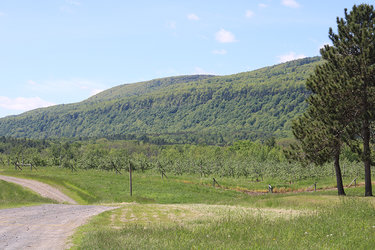Hinchey bill puts green energy money toward farmland preservation
ALBANY COUNTY — Money collected from certain renewable-energy facilities in New York State will now go toward farmland preservation, due to a bill sponsored by Senator Michelle Hinchey and recently signed by Governor Kathy Hochul.
The State Senate had passed the bill unanimously on June 2 and a similar bill passed with bipartisan support in the State Assembly.
Specifically, the bill targets large-scale facilities that have been built on farmland by developers receiving state incentives through the NY-Sun program; these developers are already subject to additional payments for using that farmland. Instead of the money going toward the state’s general fund, as it has been, it will now go toward the Agricultural and Farmland Viability Protection fund, which the bill created.
Money from that fund will then be distributed to local communities with farmland protection programs, according to a press release from Hinchey’s office.
Hinchey’s spokesperson, Bianca Coppola, said she did not know how much the state has received in these sorts of payments.
A New York State Energy Research and Development Authority spokesperson told The Enterprise that the payments will begin to be collected from developers on contracts dated Jan. 2023 or later.
Hinchey, a Democrat who chairs the senate’s Committee on Agriculture, currently represents District 46, which includes part of Albany County, but, starting Jan. 1 will represent a newly reconfigured District 41.
The bill creates yet another buffer between renewable-energy development — particularly solar energy — and farmland, which many view as at odds with one another.
As Cornell researcher David Kay told The Enterprise last month, farmland tends to be ideal for solar developers, who seek flat, penetrable land in lower-population areas. He said that he and his colleagues had analyzed 40 different late-stage solar project proposals, and found that about 75 percent were sited on farmland.
The state, which created a solar-development boom when it introduced incentives for companies in 2019, has already taken certain steps to cut down on the impact this necessary development has on its valuable farmlands, such as requiring that developers be able to reconvert farmland they use once a facility is decommissioned, and making those companies pay for every acre of prime soil that a project occupies, if it takes up more than 30 acres of soil.
The payments in 2022 are between $812 and $1,194 per acre, depending on the soil grade.
Since those payments were introduced in 2021, the rate at which projects occupied high-quality farmland plummeted, such that the footprint of projects approved in 2021 had a 22-percent overlap with prime soils, compared to 40 percent overlap in years prior.
Farm protection
The state’s farmland protection program pre-dates the renewable-energy boom, though, having been created in 1992 to protect from suburban sprawl and other development pressures, as The Enterprise reported in 2019.
In 1996, it began awarding money to municipalities so that they could buy development rights on farms, thereby preserving them as farms indefinitely through conservation easements.
Indian Ladder Farms became the first in Albany County in 2003 to surrender its development rights.
And while solar energy development is, at this point, crucial to stemming the tide of climate change, farmland also plays its role, with Mohawk Hudson Land Conservancy Director Mark King telling The Enterprise in 2019 that farms are carbon sinks, pulling earth-warming carbon dioxide from the atmosphere.
There is the potential for farming and solar facilities to cohabitate on the same land, though it’s unclear how truly effective these experimental methods will turn out to be, Kay said last month.
So far, grazing is the most successful combined use, Kay said, but the rest remains to be seen.

